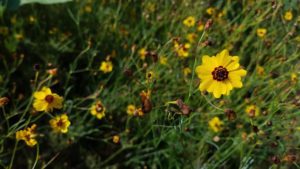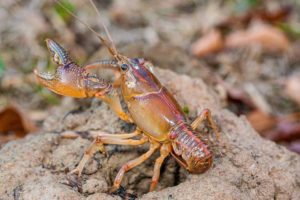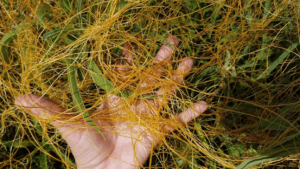North American Prairie
Temperate climate with hot summers and cold winters. Generally broken into short, mixed, and tallgrass prairie regions. Together, the prairie is also commonly known as the Great Plains AKA the Breadbasket of the World. Map shows historical ranges of prairie, as well as other grassland types in North America.
Background Photo by Rachel Roth
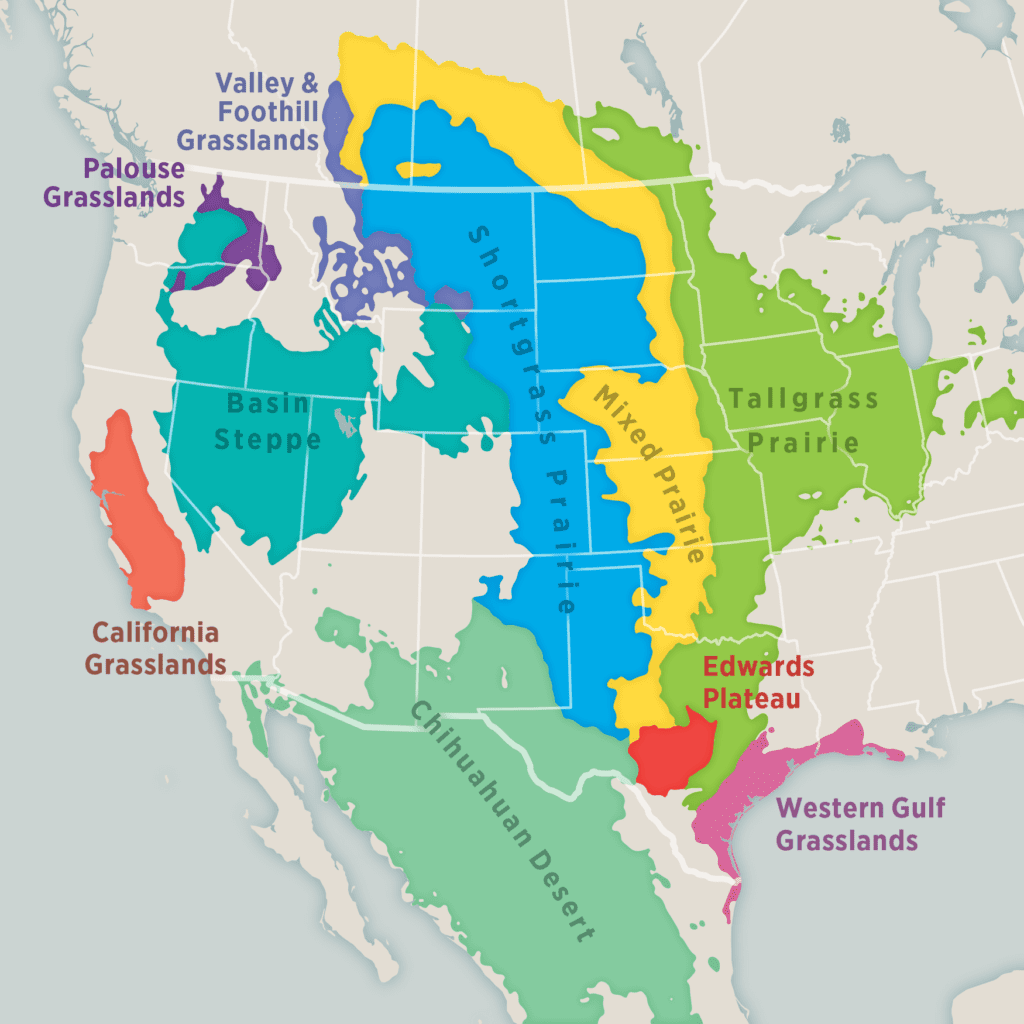
Prairie Snapshot
Prairie Ecosystems
Prairie animals and plants change across North America depending on how much rainfall each area gets. From West to East rainfall increases across the Great Plains leading to shortgrass prairies in the West and tallgrass prairies in the East with mixedgrass prairies in the middle. With each season the prairie changes drastically. In the spring grazing burning brings the grasses close to the earth. Summer is green in new growth and wildflowers. Fall brings a new wave of wildflowers like goldenrod and blazing star. As the winter creeps in grasses go dormant (stop growing) and especially in the mixedgrass and tallgrass prairie the dormant grasses will turn red and purple, leaving color through the winter snows. Included below are some of the public access wild areas where you can visit each ecosystem. Always call ahead or visit their website to check for closures!
Shortgrass
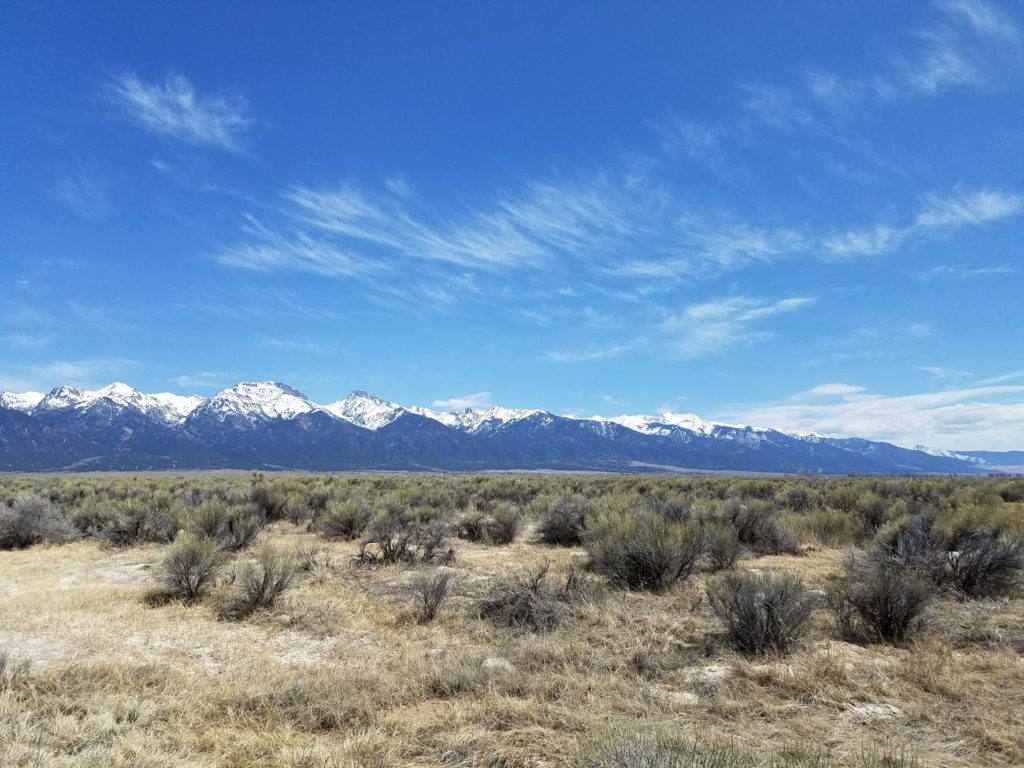
Dry, short vegetation often with small shrubs.
The shortgrass prairie starts at the foot of the Rocky Mountains and expands East from there. Most of the remaining prairie in North America is shortgrass, and it can look quite different depending on how far North or South you are. Mule deer, pronghorn, and prairie dogs thrive in this environment as well as Golden Eagles and Ferruginous Hawks.
Places to visit: Baca National Wildlife Refuge (Colorado), Grasslands National Park (Saskatchewan Province, Canada)
Mixedgrass
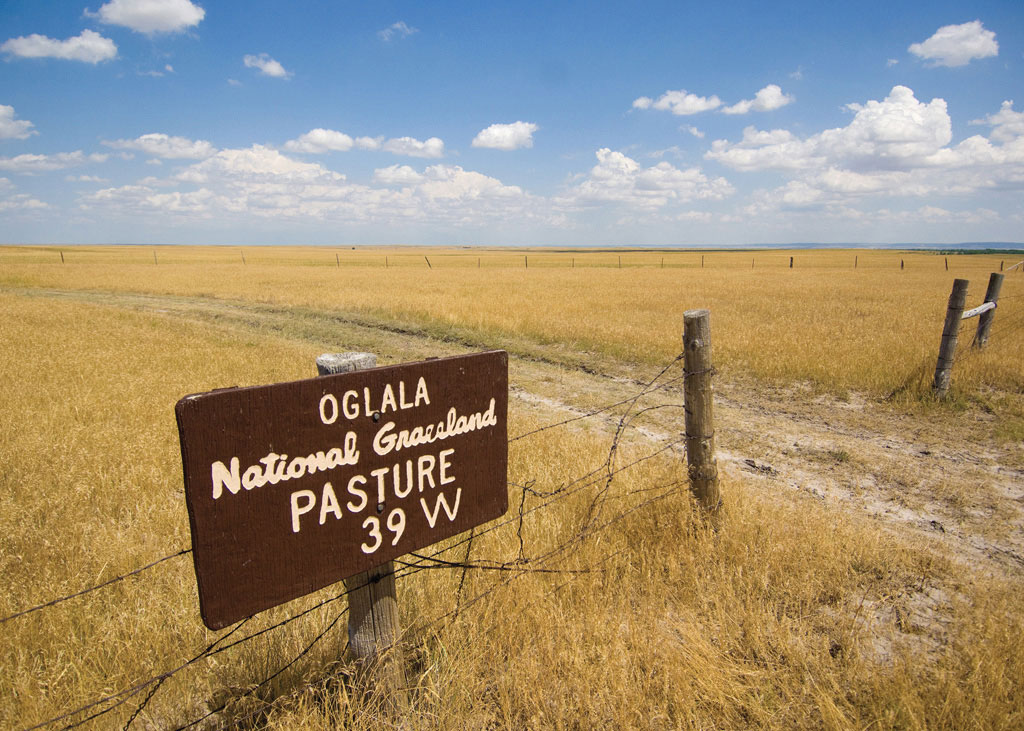
Medium height vegetation with the best skyline.
The mixedgrass prairie can sometimes be overlooked as simply a transition zone, but is home to a wide range of unique birds and mammals. Many incredibly important pitstops for migrating birds lie within the mixedgrass prairie which covers a narrow band throughout the Great Plains. Wildflowers are abundant, and so are the insects and birds who feed on them, and you can’t beat a mixedgrass prairie sunset with grasses that meet the horizon.
Places to visit: Badlands National Park (South Dakota), Oglala National Grasslands (Nebraska)
Tallgrass
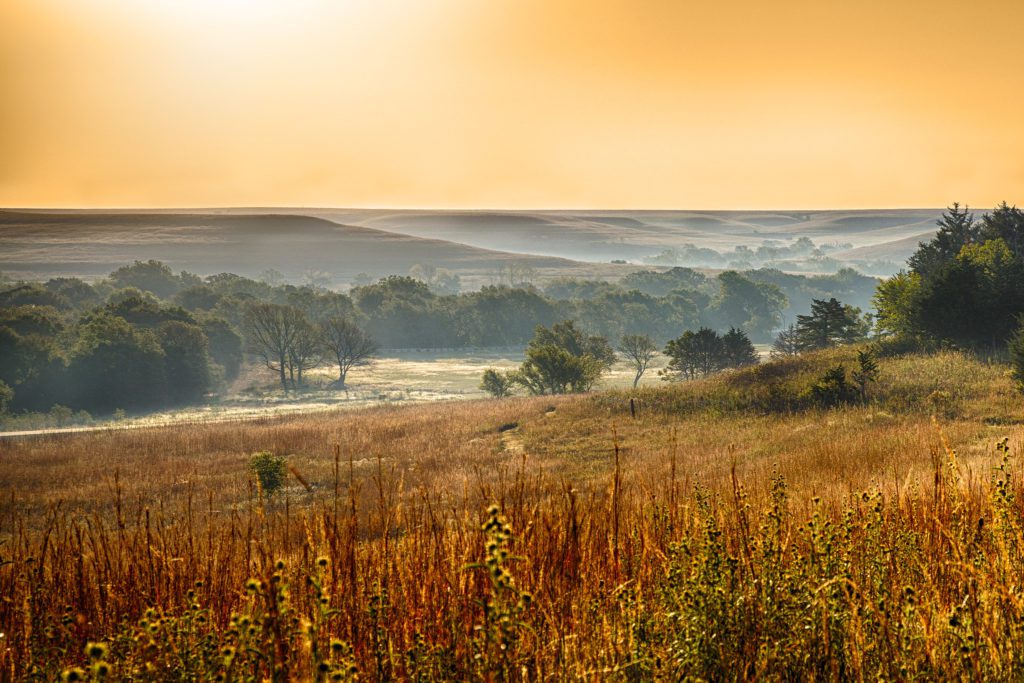
Tall vegetation, high biodiversity.
The tallgrass prairie is one of the most endangered ecosystems in the world with less than 4% remaining. Much of it resides in the Flint Hills of Kansas and Oklahoma where rocky terrain prevented conversion to cropland. Now it is most commonly used for grazing cattle much like bison used to. Unfortunately, several rock quarries have also started to mine the now valuable limestone beneath the waves of grass for use in buildings and landscape design. If going to visit a tallgrass prairie, make sure to visit in the fall when the grasses are at their full height and splendor.
Places to visit: Konza Prairie (Kansas), Tallgrass Prairie National Preserve (Kansas), Tallgrass Prairie Preserve (Oklahoma)
Prairie Roots
Many prairie plants have roots as long as they are tall or even much longer. Did you know that most prairie plants actually get most of their water within the first three feet of soil? Grasses in particular tend to use only the first few inches of soil when searching for water even if they have roots systems that are ten or more feet deep. So why the long roots?
While long roots might still help the plants reach down for some water and nutrients, a more important reason for long roots might be to anchor them against the strong winds that sweep the prairie. It is not unusual for many parts of the prairie to experience wind gusts of 60 mph (96 kph) or more. That’s a lot of force on these plants. Deep roots help keep the plants in place, as well as help combat erosion from soil that would otherwise be lifted away.
Another positive to deep roots is being able to store energy. Prairies thrive on disturbances such as grazing and fire. This can remove most if not all of the above ground vegetation. This makes roots are an invaluable way for plants to have the energy to come back as soon as possible and keep growing.
One final hypothesis is that of competition. Many grasses have a large root mass near the surface of the soil with only tendrils reaching further down. It’s this big root mass that absorbs most of the plant’s water and nutrients. Other prairie plants like wildflowers or shrubs will concentrate on soaking up water deeper down in the soil. In this way, the plants avoid competition over the limited resources available to them.
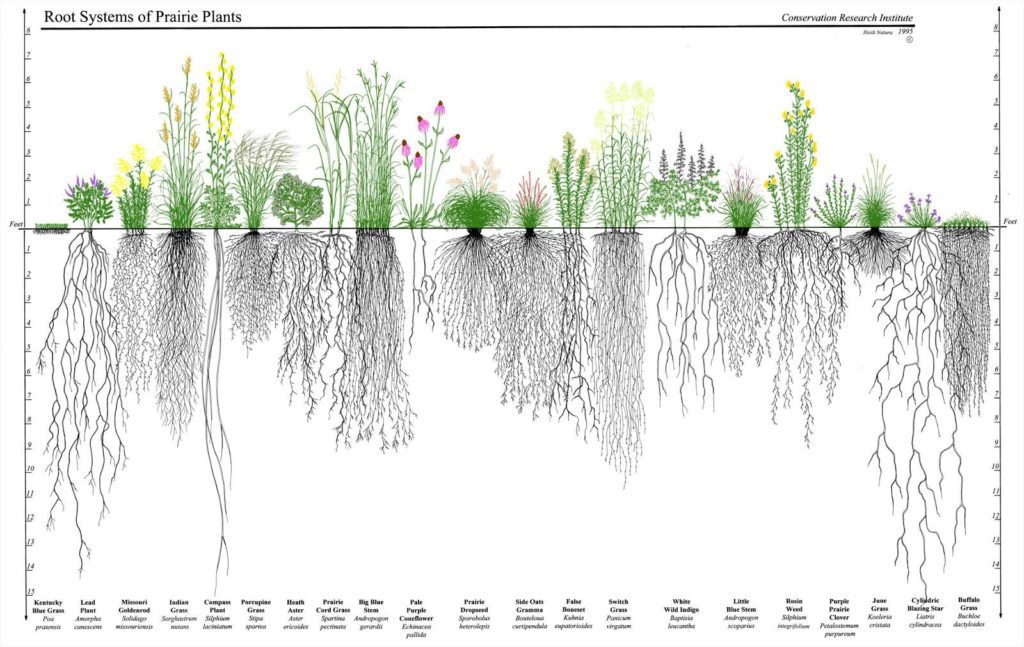
Down amongst the roots you can also find a plethora of animals that have taken to a life underground to help avoid the extreme temperatures. Prairie dogs, badgers, and a plethora of small rodents like moles, shrews, and kangaroo rats can be found in underground burrows that can be quite complex. All this digging helps to loosen the soil and allow roots and water to reach deep underground. These burrows also help provide a safe space for animals to escape extreme weather or even fire as it roars across the prairie. Fire is very natural for the prairie, and is in fact needed to help remove old vegetation and encourage new growth. Today, most burns are done in a controlled fashion and it is not uncommon to see fields black with ash during a spring drive through America’s heartland.
Historic Prairie
Much of North America’s prairie was once under and inland sea called the Western Interior Seaway. This seaway was a mix of freshwater and saltwater and was home to many ancient sharks, bony fish, and large animals such as mosasaurs and plesiosaurs. After the sea was gone (about 65 mya) many remnants of this underwater life could still be found. Throughout the prairie today you can find salt lakes, underground salt deposits, many fossils of prehistoric sea life, as well as the flying reptile Pteranodon, and chalk formations made of the crushed skeletons of billions of algae. One of the most famous chalk formations is Monument Rocks in Kansas, which has given us many famous fossils such as the “fish within a fish” fossil. Despite the wide variety of other animal fossils, very few dinosaurs can be found in the prairie earth due to it being underwater while dinosaurs roamed the Earth. The easiest place to look for fossils is along rocky roadsides or on the bottom of modern streams where fossils of ancient bivalves and freshwater coral can be found. For Kansas, a great fossil-hunting book exists called “Roadside Kansas” by Rex Buchanan. For more information on the Western Interior Seaway, we recommend “Oceans of Kansas” by Michael J. Everhart.
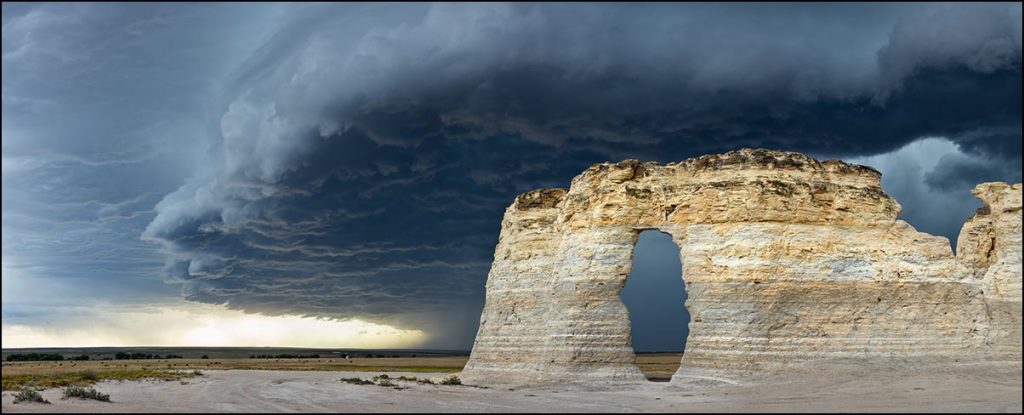
In the Sourthern parts of the Canadian prairie there are over a million (with some estimates being as high as 10 million) lakes with extremely high levels of salt. This unique environment not only hosts a wide variety of animals, but is also a valuable source of minerals used in factories. Many of these lakes are ephemeral, meaning that they will be periodically dry or wet depending on weather. This is why an estimate of how many exist is difficult.
In Kansas, two popular salt lakes include Quivira National Wildlife Refuge and Cheyenne Bottoms which are both important flyover destinations during the spring and fall migration for birds of all kinds. Arriving just before sunrise can lead to a spectacular view as thousands and sometimes millions of birds rest on or near the water and take wing to continue their long journey. In addition to these salt-filled lakes, many salt deposits exist underground that have been mined for salt and have been used afterwards as storage sites for sensitive materials such as old films, movie props, and even nuclear waste due to the constant temperatures and stable ground.
Historically, bison and pronghorn antelope were two of the most common large grazers on the prairie. However, small animals like the prairie dog shouldn’t be overlooked as they can consume a lot of grass through sheer numbers alone. The largest prairie dog town was once located in Texas and contained an estimated 400 million animals. Today, prairie dogs and bison are a much more rare sight, while pronghorn are still doing well. The fleet-footed pronghorn can outrun predators with ease as they are North America’s fastest land animal and as such are very successful. This speed evolved when they ran alongside predators like the American cheetah which went extinct some 10,000 years ago.
Migration was once a large part of the prairie ecosystem as well. Bison, pronghorn, deer, and many other animals would roam the wide expanses of the prairie, moving on as they ran out of fresh food in an area. Today, with prairies being so fragmented, few large migration routes exist for grazers with a couple notable exceptions.
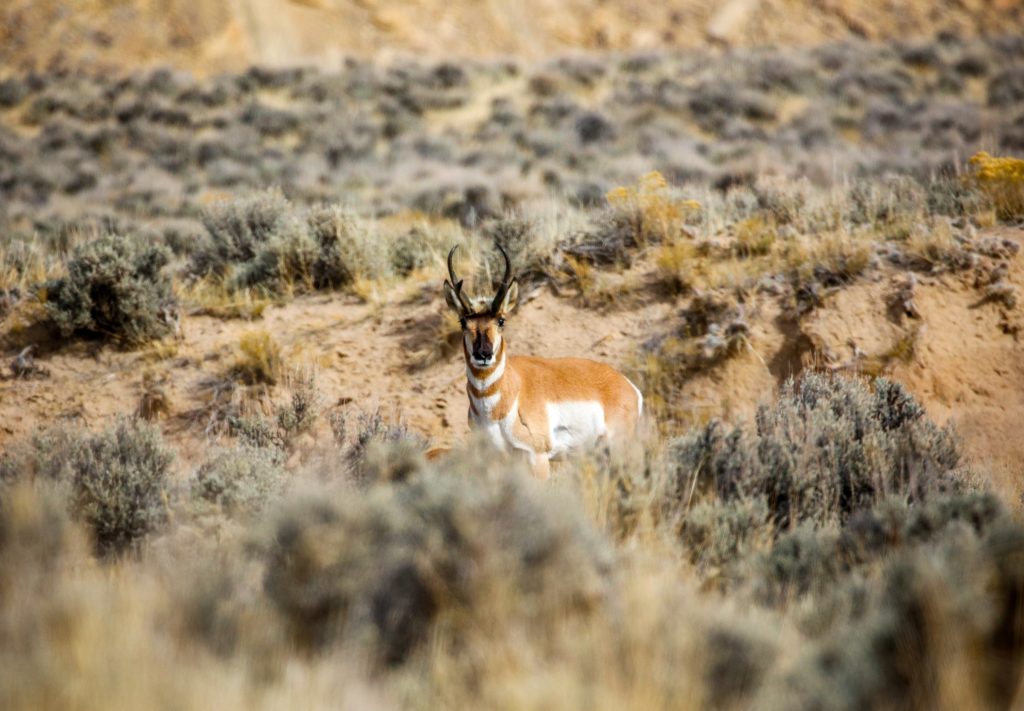
Pronghorns have the second longest established migration route of any North American mammal, second only to the Caribou. They travel 150 miles each year on the same path they have traveled for nearly 6,000 years. The Path of the Pronghorn is a federally recognized wildlife corridor (first of its kind) which ensures that this amazing animal’s journey can continue despite the changing landscape around it.
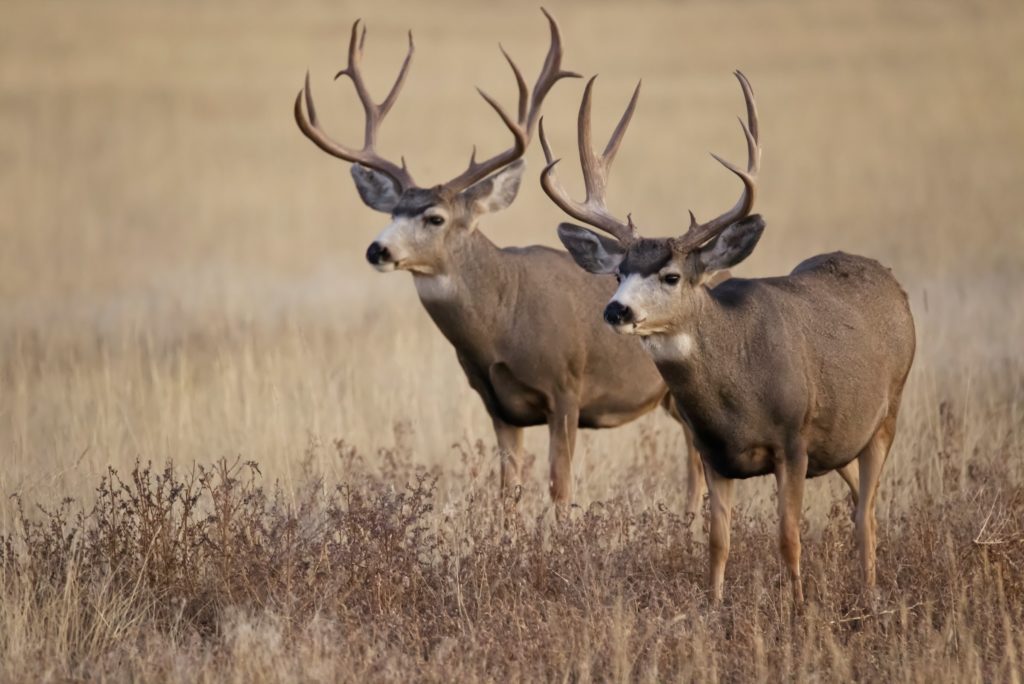
The longest migration of any animal in North America belongs to a mule deer known as Deer 255 who maxed out at nearly 250 miles (one-way) in 2019. In general, many mule deer do not migrate at all, while other herds migrate much shorter distances (though still impressive). One group of mule deer were recently found to make an amazing 150 mile migration.
Birds
Birds in the prairie are very unique, and most commonly consist of small grass-loving birds such as Meadowlarks, Dickcissels, Lesser Prairie Chickens (listed as Threatened in the United States), Upland Sandpipers (long-distance migrants who breed in the prairie), and a plethora of sparrows such as the Grasshopper Sparrow. In the sky above you might find several different species of birds of prey such as Ferruginous Hawks, Red-tailed Hawks, American Kestrels (the smallest falcon in North America), and even Golden Eagles in the Western prairie. These birds of prey are often tightly linked to animals which are currently seeing a decline such as prairie dogs. In order to preserve the prairie wildlife, an ecosystem-wide approach must be taken, with not only plots of land being set aside as safe havens, but also by practicing responsible land management when the land is in use (such as in farming or ranching).
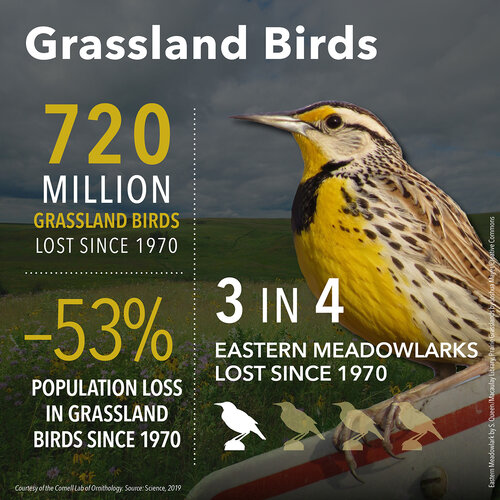
Grassland birds are some of the fastest disappearing bird groups in North America. Major bird conservation groups have come together in recent years to bring attention to these imperiled species and this all came together to form 3billionbirds.org which is a great resource for a breakdown on how many birds have been lost. They also give ways to help our birds including: avoiding pesticides, making your windows safe for birds, and keeping your cats indoors. Other than loss of habitat, it is widely regarded that outdoor cats are the number one killer of our native birds with some 2.6 billion kills each year.
All hope is not lost however, as the same study that found these tragic numbers of decline have also found that birds like ducks and geese that are have more active conservation measures in place have increased their numbers by 35 million. Birds of prey have also increased by 15 million individuals in the same time frame.
Many grassland birds also nest on the ground, which puts them at unique risk to not only predators such as coyotes or snakes, but also weather and human activities.
The Prairie's Future
The American prairie has been an important part of human culture for a very long time from indigenous cultures to European colonists. Also known as the Breadbasket of the World, this area has turned into a huge source of food for people around the globe. The demand for more farms for both crops and ranching as well as expanding cities has led to much of the prairie being lost. There exists many organizations which are hoping to not only preserve the prairie we have left, but also restore land as well. Modern land management such as rotational grazing (where herds are moved regularly) and crop rotation (avoiding using the same crops multiple years in a row) has helped the land to not only become more productive but also more wild. The future of the prairie feels uncertain at times, but it is possible for the prairie to exist alongside humans, we only need to try.
If you wish to help the prairie, you can donate to a reputable prairie organization, volunteer for invasive plant removal (a huge strain on grasses), plant native gardens, and spread the love for grasslands.
TL;DR 1
Et ligula sit quam, sapien lorem.
Prairie-related episodes:
Native Gardening
Native gardening is a great way to help the environment as well as show your neighbors you're definitely better than them.
Read MoreSources/Further Reading:
- North American Grasslands & Birds Report. National Audubon Society (2019). Retrieved January 26, 2021.
- Last, William M., and Ginn, Fawn M. “Saline systems of the Great Plains of western Canada: an overview of the limnogeology and paleolimnology” Aquatic Biosystems, 1, 10 (2005).
- Nippert, J.B. and Holdo, R.M. (2015), Challenging the maximum rooting depth paradigm in grasslands and savannas. Funct Ecol, 29: 739-745.
- Pierce, W. G. and Rich, E. I. (1962). Summary of Rock Salt Deposits in the United States as Possible Storage Sites for Radioactive Waste Materials. U.S. Atomic Energy Commission, Department of the Interior.
- Path of the Pronghorn. The Conservation Fund. Retrieved January 26, 2021.
- Sawyer, H., Middleton, A. D., Hayes, M. M., Kauffman, M. J., and Monteith, K. L.. 2016. The extra mile: Ungulate migration distance alters the use of seasonal range and exposure to anthropogenic risk. Ecosphere 7( 10): e01534.
- University of Wyoming, Wyoming Migration Inititive. https://migrationinitiative.org/ Retrieved January 26, 2021.
- Cretaceous Atlas. National Science Foundation. Retrieved January 26, 2021.
Did you spot an error or have questions about this page? Email Nicole Brown at: nicole@grasslandgroupies.org

